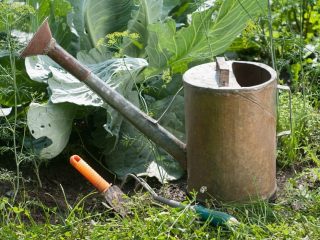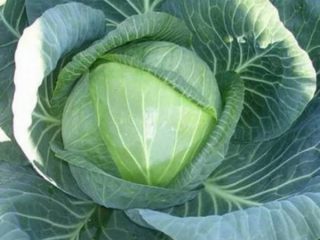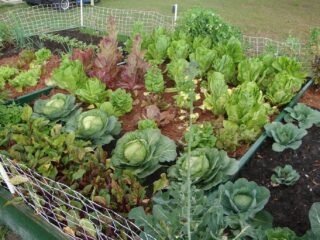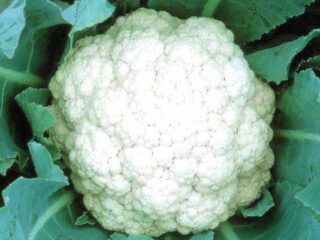Content
Chinese cabbage has been steadily gaining popularity in recent years and is “conquering” the garden plots of Russian gardeners. However, few are familiar with all the important nuances of its cultivation and optimal conditions for growing. One of the frequent consequences of mistakes in agricultural technology and when choosing a place for a garden bed is that Chinese cabbage starts to bloom. It is no longer possible to “save” the harvest of the current season, so you need to find out in advance how to prevent this unpleasant phenomenon.
Why doesn't Chinese cabbage set into a head?
When the plant begins to bloom, nutrients are sent specifically to the buds, and then to the ripening of seeds. That's why the heads of cabbage don't set, they just don't have enough strength.
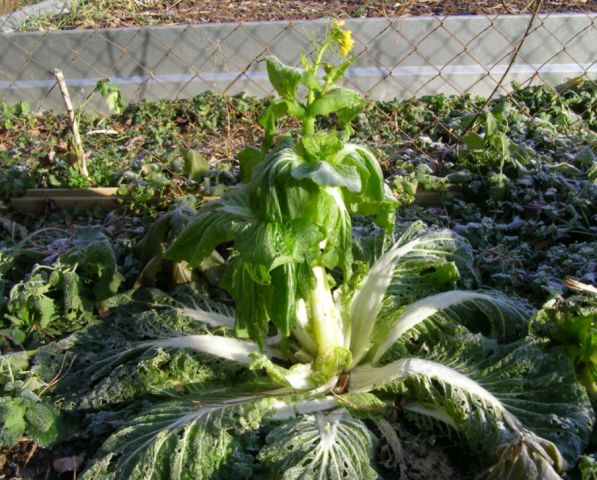
A “flowerbed” instead of a bed with Chinese cabbage is not normal
Most often, Chinese cabbage blooms with yellow flowers for the following reasons:
- Inappropriate place for a garden bed. This is a short-day plant; it prefers light partial shade and reacts negatively to direct sunlight.
- Heatwave.Chinese cabbage, like other cruciferous vegetables, reacts to it by bolting. It goes into color most quickly if high temperatures are combined with drought.
- Excessively early disembarkation. If the substrate has not yet warmed up sufficiently or there are frequent changes in day and night temperatures, the cauliflower feels “uncomfortable”, its “priority goal” is reproduction, for which it goes into color and forms seeds.
- Error when choosing variety. Many varieties are simply not zoned for the Russian climate in general or for individual regions. In conditions that are far from optimal, plants quickly go into bloom.
- Harvest too late. Beijing cabbage ripens quickly; if harvesting is late, it moves into the next phase of development. She does not have a “rest period”.
- Root damage. The plant perceives them as a “threat to life”; instead of forming a head of cabbage, it goes into flower so that the seeds have time to ripen.
- Nutrient deficiency, excessively infrequent watering. The plant also considers such situations “extreme”; reproduction becomes its “priority”. It is especially sensitive to a lack of potassium and phosphorus.
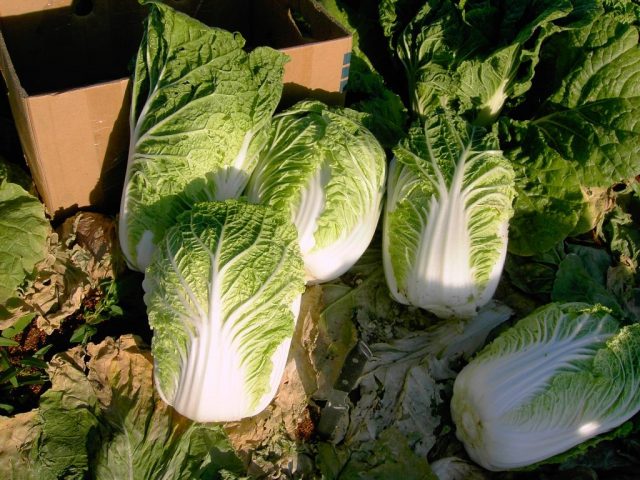
Heads of cabbage are cut as soon as they ripen so as not to lose the harvest
Why did the seedlings bloom?
A gardener may lose his Chinese cabbage harvest already at the stage of growing seedlings. Here it comes into bloom for almost the same reasons as adult plants:
- Deficiency of macro- and microelements in the soil or their excess. Chinese cabbage perceives a lack of nutrients as a “threat to life”; excess nutrients cannot “understand” where else to direct it.In both cases, it fades into color.
- Excessively abundant and/or frequent watering. The roots of the seedlings begin to rot, and the seedlings begin to bloom.
- Daylight hours are too long. Plants go through all phases of development in “accelerated mode”, so they bloom very early.
How to understand that cabbage will bloom soon
The appearance of the plants indicates that Chinese cabbage is about to go into bloom:
- leaves wither, lose tone, turn pale;
- new leaf plates stop forming, the plant “freezes” in development;
- the head of cabbage does not “grow” in width; the existing leaves noticeably stretch upward.
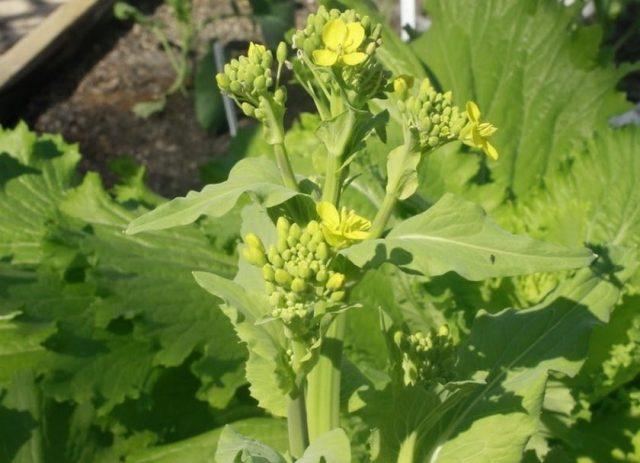
If it is obvious that the plant is about to bloom, you can safely dig it up - the process is irreversible
What to do if Chinese cabbage has started to bloom
If the Chinese cabbage has gone into bloom or is even just preparing for this, the process is irreversible, and it is no longer possible to “save” this head of cabbage. The only thing a gardener can do is to get rid of the flowering plant and replace it with a new one. Chinese cabbage ripens quite quickly: if you choose the right variety or hybrid, there is a chance that it will have time to form heads of cabbage before the end of summer.
Preventive measures
Peking cabbage, which is going into flower, is already “lost” for the gardener. However, your own mistakes will not be useless if you take them into account, identify the reasons that forced the plants to form buds and prevent such situations from reoccurring in the future.
Variety selection
The suitability of a Chinese cabbage variety or hybrid for cultivation in a particular region is one of the main criteria influencing a gardener’s choice. If a given variety is zoned, the risk that the plants will go into flower is greatly reduced.
In the Russian climate, varieties and hybrids of Chinese cabbage bred in the Netherlands feel “comfortable”. They do not fade in color due to temperature changes and are generally “resistant” to negative external influences.
The following varieties are popular with gardeners:
- Monaco;
- Starko;
- Bilko;
- Optico;
- Taranco;
- Mirako.
Some domestic varieties and hybrids are also not prone to flowering:
- Khibinskaya-5;
- Spring Jade;
- Autumn beauty;
- Squirrel;
- Aikido;
- Wineglass;
- Pomegranate;
- Vorozheya;
- Lyubasha.
Only Chinese cabbage made from “original” high-quality seeds has the declared properties. Therefore, they should be purchased only where the seller can provide certificates and other documents for their own goods.

The choice of varieties and hybrids of domestic and foreign selection that are not prone to flowering is quite large
Site selection
Significantly minimizes the risk that Chinese cabbage will fade by choosing a place for planting it, taking into account the “requirements” of the crop:
- A substrate that combines fairly high fertility with looseness. In soil that is too “heavy” the root system cannot develop normally and the plant cannot bloom.
- Neutral or slightly acidic soil pH.Any cabbage cannot tolerate highly acidified soil.
- There are no prerequisites for water stagnation at the roots. To prevent Chinese cabbage from blooming, it should not be planted in lowlands or at the foot of a hill, where rainwater does not drain for a long time, where damp cold air accumulates. Also, areas where groundwater comes closer to the surface than a meter are not suitable for it.
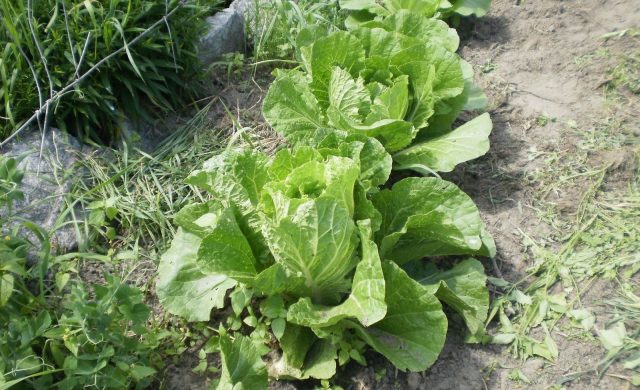
Chinese cabbage loves partial shade, but not damp or cold
Lighting
To prevent Chinese cabbage from blooming, it must be planted in an area where it will be exposed to light for a maximum of 10-12 hours. It is placed near a natural or artificial “barrier” that will provide it with the required partial shade and coolness. But you cannot “press” the bed tightly against it: for normal air circulation an interval of about 50 cm is required.
The shadow can also be created “artificially”. After the specified time has passed, arcs are installed over the bed with Chinese cabbage and covered with any breathable black covering material. Plastic film will not work - in the heat the plants under it will simply “burn.”

Flowering is almost inevitable in extreme heat and direct sunlight.
Temperature
The optimal temperature for the growth and development of Chinese cabbage, at which it does not bloom, is about 20 ° C. The critical minimum for the crop is 12-13 °C. If the temperature rises above 27-30 °C, the plants go into a kind of “hibernation”, stop forming heads and begin to produce buds.
Boarding time
Considering that Chinese cabbage forms heads quickly, choosing the right planting time will help provide it with the required length of daylight and not go into color. The seedlings are transferred to the garden bed either quite early, as soon as the substrate warms up, or already in the last days of July or in the first ten days of August, towards the end of the growing season.
In the conditions of central Russia, the ground temperature reaches the required 10 °C around mid-April. If spring is very late and cold, planting can be delayed until the end of the first ten days of May.
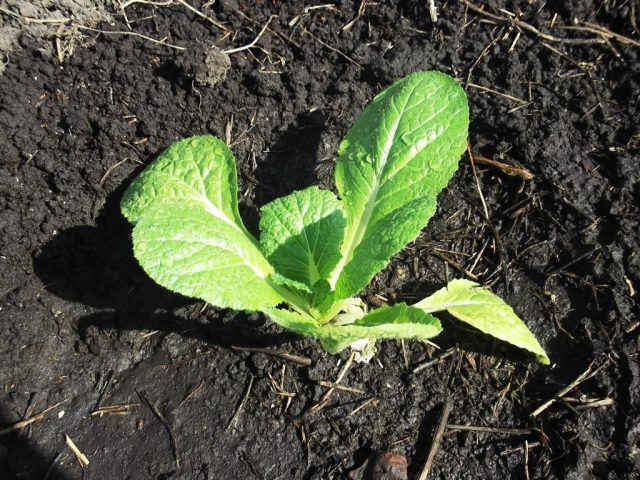
Two crops can be harvested not only in regions with a temperate climate, but also in more severe conditions
Watering
Like any other cabbage, Peking cabbage is moisture-loving. In the absence of rain, it is watered every 3-4 days, spending approximately 5 liters of water per plant.
Regular watering is extremely important for Chinese cabbage. It also responds to rare but abundant irrigation of the soil in the intervals between long droughts by flowering.
The moisture-loving nature of a culture does not mean that it will tolerate the transformation of a garden bed into a “swamp.” In such conditions, the roots quickly begin to rot, and Chinese cabbage blooms.
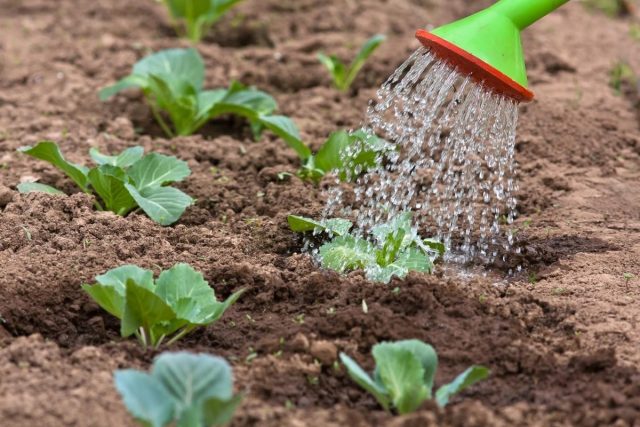
Unlike many garden crops, sprinkling as a method of watering Chinese cabbage is very suitable
Top dressing
Due to the “accelerated pace” of ripening, Chinese cabbage needs quite large doses of nutrients, and when they are deficient, it goes into color. The culture responds positively to both natural organic matter and folk remedies, as well as purchased complex fertilizers.
But the last option is still preferable.In order for Chinese cabbage not to bloom, but to form heads of cabbage, it needs quite rare microelements. Organics do not contain them in the required concentration.
The necessary “reserve” is partially provided already in the process of preparing the bed for Chinese cabbage. The dug substrate is enriched with humus, and a complex fertilizer containing nitrogen, phosphorus and potassium is applied.
It is also necessary to find out the acid-base balance of the soil in advance. If it is excessively acidified, additional “deoxidizers” are needed. Dolomite flour, sifted wood ash, and crushed chalk not only restore the required pH, but also saturate the soil with potassium, phosphorus, calcium, and magnesium.

Specialized fertilizers for cabbage contain all the substances it needs in the right proportions.
Is it possible to eat Chinese cabbage if it has gone into color?
Chinese cabbage that is blooming or preparing to bloom is not suitable for food. The taste of the leaves sharply deteriorates, an almost unbearable bitterness appears due to the “milky” juice accumulating in the veins.
Heat treatment, salting, pickling, and other cooking methods will not help get rid of the specific taste. Also, soaking in salt water will not give the desired effect. The bitterness persists, and healthy substances are also lost.
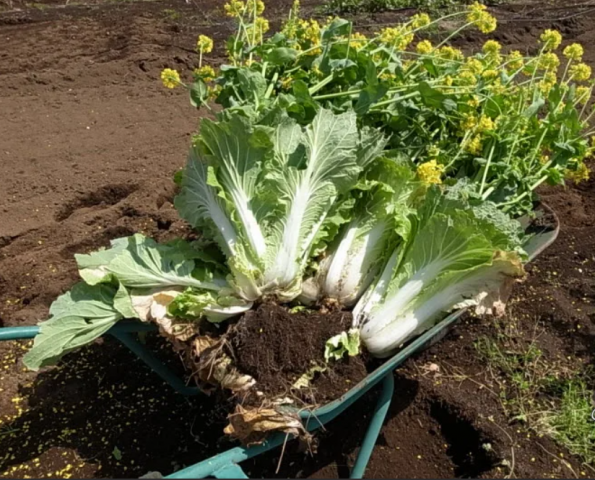
It is impossible to “restore” the taste and health benefits of specimens that have begun or are about to bloom.
Conclusion
Peking cabbage blooms for various reasons or a combination of them. To avoid this, special attention must be paid to choosing the appropriate variety and location for the garden bed.No less important is knowledge of the nuances of agricultural technology and the use of other preventive measures: after all, the process of “blooming” for Chinese cabbage is irreversible.
